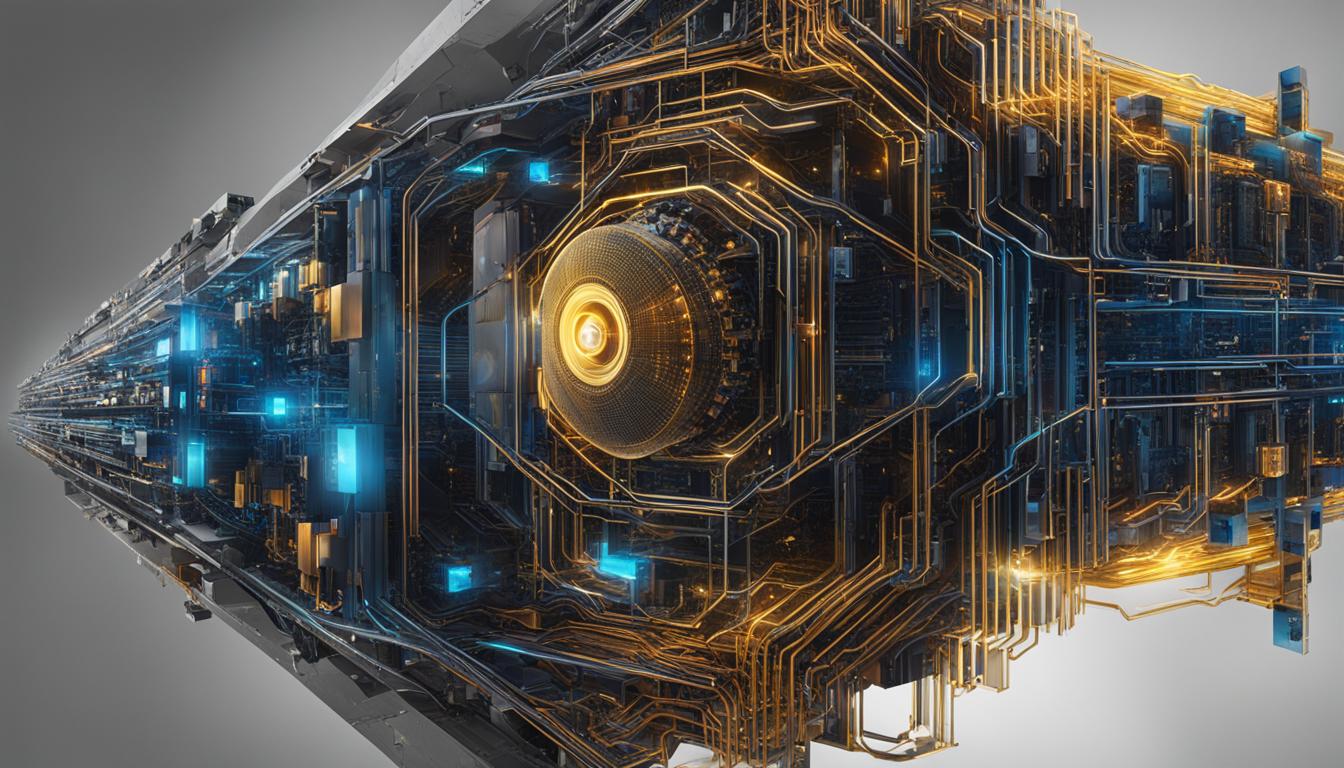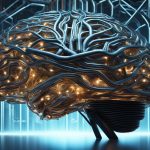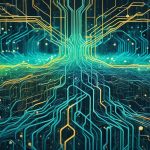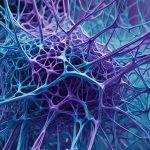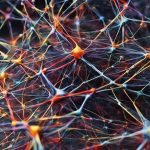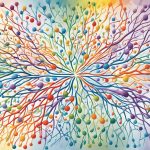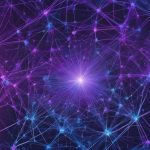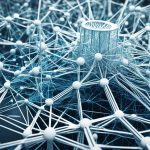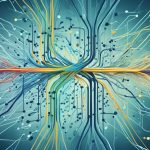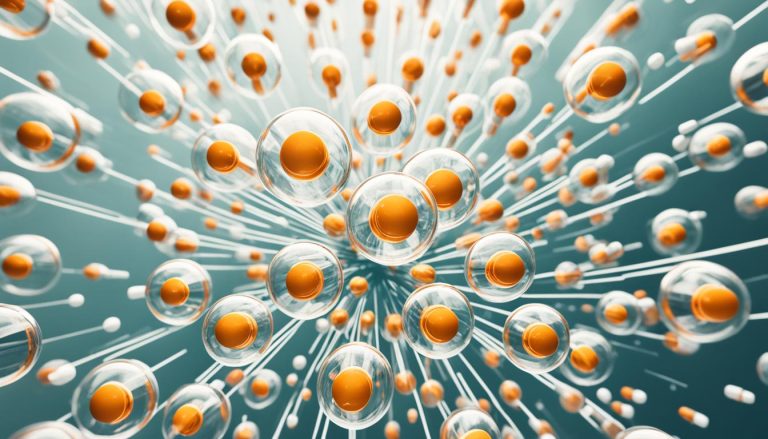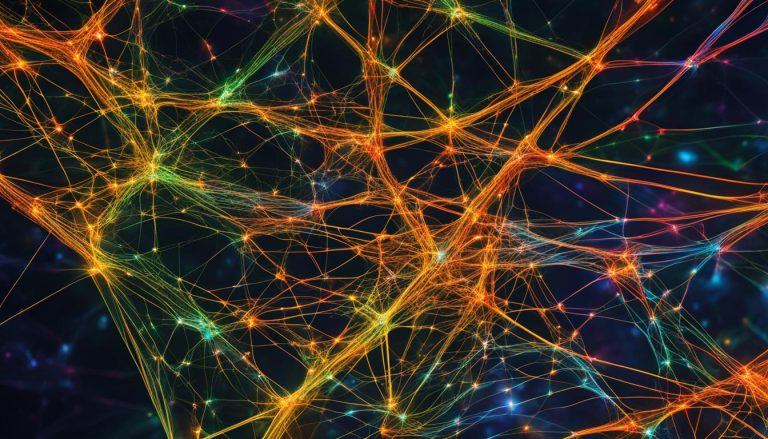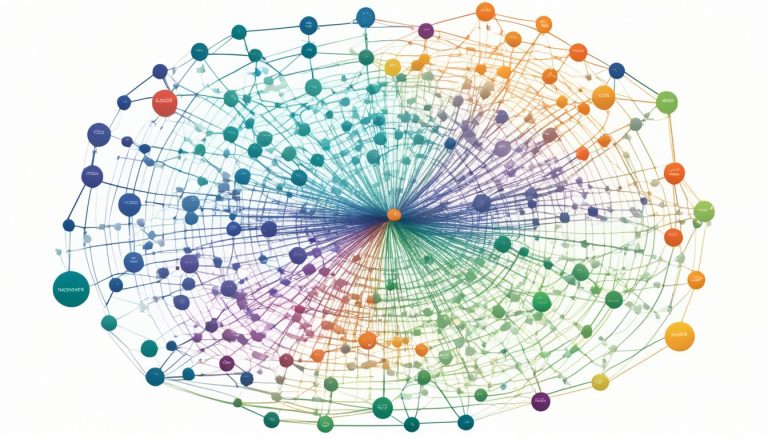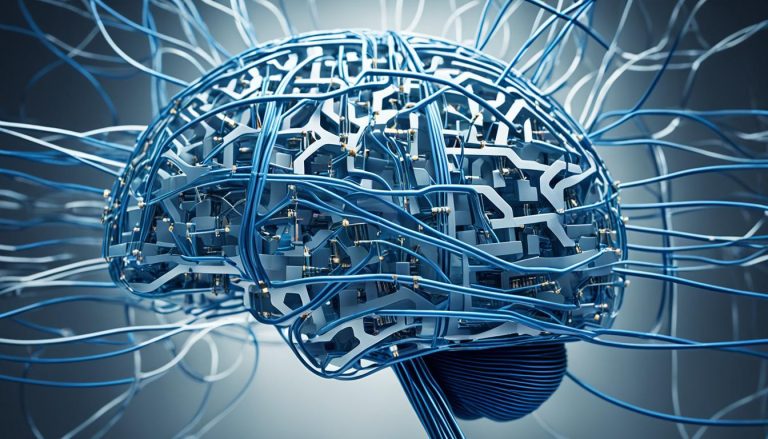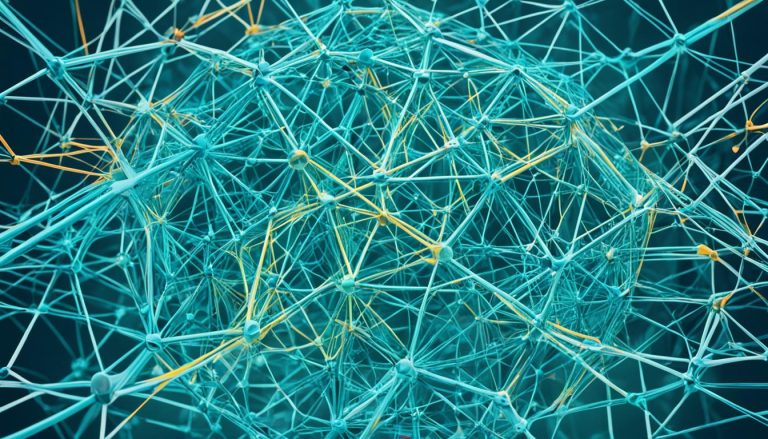Neural Turing Machines (NTMs) are an incredible advancement in the field of artificial intelligence, bringing together the power of AI and memory systems. These groundbreaking machines have the ability to mimic the human brain’s capacity to quickly store and retrieve information, making them a valuable tool for advanced AI applications.
NTMs were first introduced in a paper titled “Neural Turing Machines” by Graves et al., serving as the foundation for understanding their architecture and potential. With their unique design, NTMs bridge the gap between AI and memory systems, pushing the boundaries of what AI can achieve.
Relevant Tags:
The Motivation for Neural Turing Machines
Before the emergence of neural networks, AI research was primarily focused on symbolic AI, which aimed to simulate information processing systems through the manipulation of symbols and structures. However, early neural networks faced two major criticisms: their struggle with variable-size inputs and their inability to bind values to specific locations in data structures, which are fundamental aspects of memory systems.
“Early neural networks struggled with variable-size inputs and lacked the ability to bind values to specific locations in data structures.”
To address these limitations, researchers turned to connectionism and introduced recurrent neural networks (RNNs). RNNs have the unique ability to process variable-size inputs and have the potential to learn how to use an external memory.
- RNNs enable the processing of variable-size inputs.
- RNNs have the potential to learn how to use external memory.
This breakthrough paved the way for the development of Neural Turing Machines (NTMs). NTMs combine the power of neural networks with the external memory bank, bridging the gap between AI and memory systems.
Symbolic AI vs. Connectionism
Symbolic AI and connectionism are two contrasting approaches in the field of AI research.
| Symbolic AI | Connectionism |
|---|---|
| Focused on manipulating symbols and structures | Leverages neural networks and distributed representations |
| Simulates information processing systems through symbol manipulation | Mimics the parallel processing of the human brain |
| Struggles with variable-size inputs and memory systems | Enables processing of variable-size inputs and external memory |
The Birth of Neural Turing Machines
The combination of RNNs and external memory banks led to the birth of Neural Turing Machines. These machines introduced the use of memory systems in neural networks, enabling them to store and retrieve information more effectively.
“Neural Turing Machines combine the power of neural networks with the external memory bank, bridging the gap between AI and memory systems.”
With the ability to process complex input data and interact with external memory, Neural Turing Machines opened up new avenues for AI research and applications.
The Architecture of Neural Turing Machines
The architecture of Neural Turing Machines (NTMs) consists of a neural network controller and an external memory bank. This unique architecture enables NTMs to bridge the gap between artificial intelligence (AI) and memory systems, providing enhanced computing capabilities.
The neural network controller serves as the brain of the NTM. It receives input from the outside world and generates output based on its understanding of the input. More importantly, the neural network controller has the remarkable ability to read from and write to specific memory locations within the memory bank.
The memory bank acts as a 2D matrix, storing vast amounts of information. This external memory serves as an extension of the neural network controller’s limited internal memory, allowing the NTM to store and retrieve data with ease.
In order to interact with the memory bank, the neural network controller utilizes a mechanism known as heads. These heads are responsible for specifying the memory locations that the NTM will read from or write to.
When performing reading operations, the NTM generates weight vectors. These weight vectors determine the relevance of each memory location for the current computation. Based on the weight vectors, the NTM selectively retrieves the relevant information from the memory bank.
On the other hand, when the NTM performs writing operations, it erases and adds information to the memory bank. This dynamic process allows the NTM to update and store new knowledge within the memory bank.
The architecture of Neural Turing Machines enables them to interact with memory in a flexible and dynamic manner. By combining the power of a neural network controller with the capacity of an external memory bank, NTMs open up new possibilities for AI applications and memory systems.
Mathematics of Reading and Writing in Neural Turing Machines
In Neural Turing Machines (NTMs), the reading and writing operations involve the use of weight vectors. These weight vectors are generated through an attention mechanism, guiding the NTM on where to read from or write to in the external memory bank.
During the reading operation, the weight vector determines the contribution of each memory location to the output. It enables the NTM to selectively retrieve relevant information from the memory bank. Weight vectors play a crucial role in focusing the attention of the NTM and extracting the most relevant data.
When it comes to writing, the weight vector is used in conjunction with an erase vector. The erase vector selectively erases information in the memory bank. It identifies the locations that need to be modified or updated. After erasing, the weight vector is again utilized to determine where to add new information to the memory bank. This dynamic process of erasing and adding allows the NTM to effectively store and update data.
The weight vectors in NTMs are generated based on similarity measures. These measures evaluate the relevance between the current input and the contents of the memory bank. They are influenced by various parameters such as key strength and interpolation gate, which modulate the weight vectors’ behavior. These parameters enable the NTM to adjust the focus and prioritize certain memory locations for reading or writing operations.
Overall, the mathematics of reading and writing in Neural Turing Machines form a comprehensive framework for efficient memory interaction. The attention mechanism and weight vectors provide the NTM with the ability to read from and write to memory in a flexible and dynamic manner, making them powerful tools in AI applications.
Now, let’s take a closer look at the attention mechanism and weight vectors in action with an example.
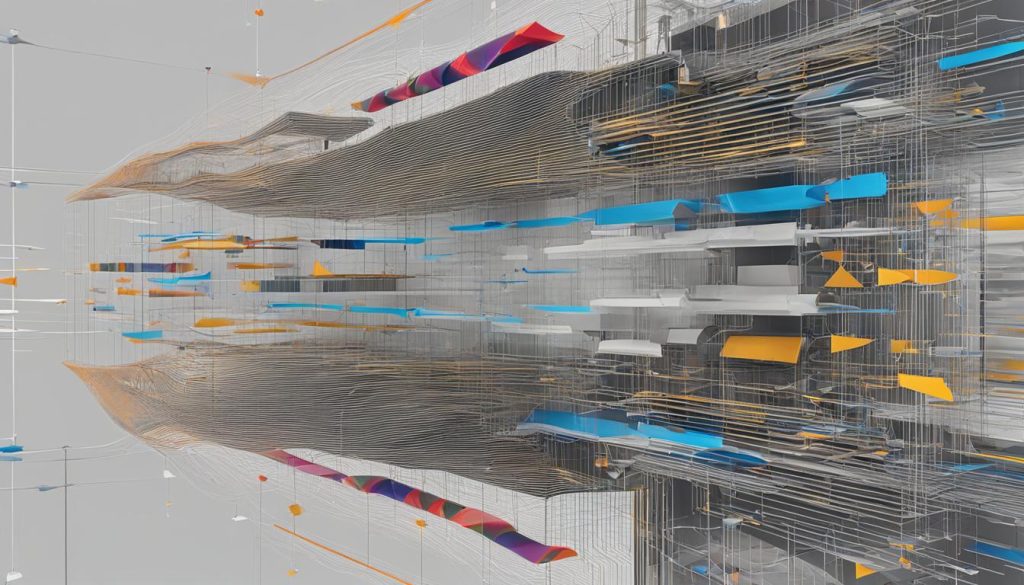
Example: Attention Mechanism in a Neural Turing Machine
Consider an NTM that is trained to read and write from a memory bank in order to perform a language translation task. The NTM receives an input sequence in one language and is tasked with generating the corresponding translation in another language.
During the translation process, the attention mechanism generates weight vectors that highlight the relevant parts of the input sequence and memory bank. These weight vectors guide the NTM in reading from the memory bank to retrieve important information for generating the translation.
For example, when the NTM needs to translate the word “apple,” the attention mechanism generates a weight vector that assigns higher weights to memory locations where information about fruits or food is stored. This allows the NTM to focus on relevant memory locations and generate an accurate translation.
The attention mechanism and weight vectors in Neural Turing Machines enable the system to dynamically adapt its focus and prioritize relevant information. This flexibility allows NTMs to excel in tasks that require accessing and utilizing memory effectively, making them a powerful tool in the field of artificial intelligence.
Addressing in Neural Turing Machines
Neural Turing Machines (NTMs) leverage sophisticated addressing mechanisms to determine the optimal memory locations for reading and writing operations. These mechanisms, namely content-based addressing and location-based addressing, play a crucial role in enabling NTMs to effectively retrieve information from memory and perform complex tasks.
Content-Based Addressing
Content-based addressing involves comparing a key vector emitted by the controller to each row of the memory matrix to determine similarity. By utilizing this approach, NTMs can locate specific pieces of information stored in the memory bank. Through a process of analyzing the content and matching it with the key vector, NTMs are able to retrieve the relevant information required for ongoing computations, decision-making, or processing tasks.
Location-Based Addressing
Location-based addressing, on the other hand, enables the heads of the NTM to shift their attention forward or backward within the memory bank. This flexible addressing mechanism allows NTMs to swiftly navigate through the memory matrix to access the desired information. By adjusting the position of the heads, NTMs can efficiently read or write data at specific memory locations, enhancing their overall performance and adaptability.
The location-based addressing mechanism is complemented by shift weighting, which determines the extent of the shift. Shift weighting ensures that the attention is appropriately allocated to the adjacent memory locations, highlighting the relevance and importance of neighboring information. This process prevents blurring and preserves the integrity of the retrieved data.
The shifted weight vectors are further sharpened to enhance the precision of the addressing mechanism. Sharpening ensures that the attention remains focused on specific memory locations, reducing the likelihood of any scattered or diffuse retrieval of information. This sharpening process streamlines the functioning of the NTMs, leading to more accurate data retrieval and stronger computational capabilities.
With content-based addressing, location-based addressing, shift weighting, and sharpening techniques, NTMs possess remarkable capabilities for addressing memory within a neural architecture. These addressing mechanisms facilitate efficient information retrieval, enabling NTMs to perform a wide range of complex and data-intensive tasks.
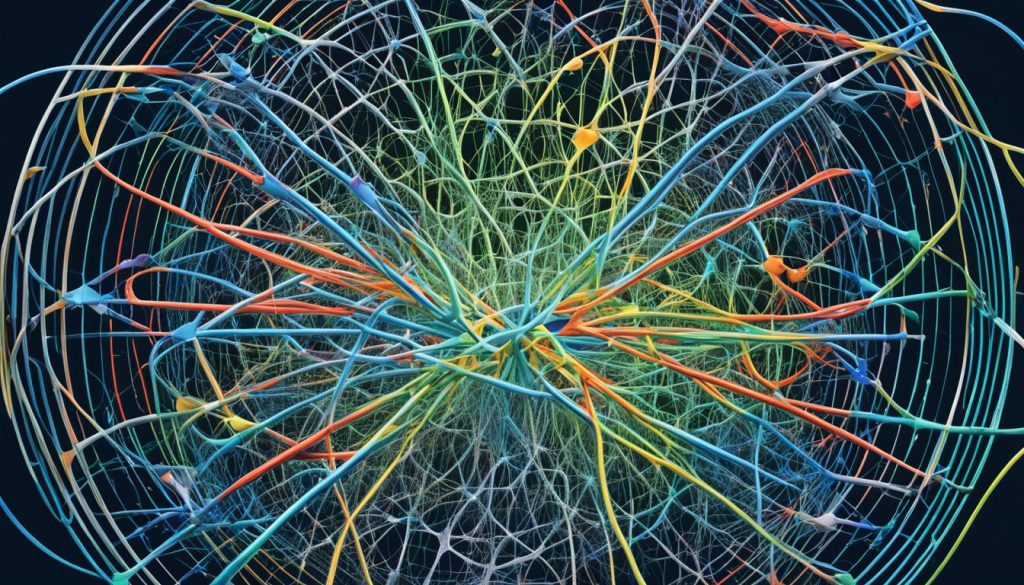
The Advantages of Neural Turing Machines for RUL Estimation
Estimating the Remaining Useful Life (RUL) in mechanical systems is a critical task, and Neural Turing Machines offer significant advantages in this area. While traditional approaches to RUL estimation rely on model-based methods or data-driven methods, deep learning-based approaches, particularly those utilizing Long Short-Term Memory (LSTM) networks, have shown promise in extracting useful features and identifying temporal dependencies in the data.
Neural Turing Machines go a step further with their external memory and the ability to automatically extract features from raw sensor data. This unique combination offers a potentially more powerful and efficient approach to RUL estimation, surpassing the capabilities of traditional methods.
“Neural Turing Machines provide a game-changing solution for estimating the Remaining Useful Life in mechanical systems. Their ability to leverage deep learning and external memory brings a new level of accuracy and efficiency to this critical task.” – Dr. Maria Johnson, AI expert
Model-based Methods vs. Data-driven Methods
Model-based methods for RUL estimation rely on mathematical or physical models that describe the degradation process of the mechanical system. These models require a deep understanding of the underlying mechanisms and assumptions about the behavior of the system. While they can provide accurate estimations under controlled conditions, they may struggle to capture the complex real-world dynamics and variations.
Data-driven methods, on the other hand, leverage historical sensor data to learn the patterns and trends of system degradation. By analyzing past observations, these methods can make predictions about future RUL. However, data-driven approaches may be limited by the quality and availability of the data and may not effectively capture the underlying mechanisms driving the degradation process.
The Power of Deep Learning and Neural Turing Machines
Deep learning, with its ability to automatically extract meaningful features from raw data, has revolutionized various fields, including RUL estimation. LSTM networks, a popular deep learning architecture, have proven effective in capturing long-term dependencies and temporal patterns in sequential data.
Neural Turing Machines take deep learning a step further by incorporating external memory, allowing them to store and access a wealth of information. This external memory acts as a powerful tool for capturing long-term dependencies and contextual information, providing a more comprehensive understanding of the system’s behavior. It enables the AI model to learn and adapt over time, improving the accuracy of RUL estimations.
The combination of deep learning and Neural Turing Machines enables the model to automatically extract relevant features from raw sensor data and leverage the long-term memory to make accurate predictions about the Remaining Useful Life of the mechanical system.
Empirical Validation of Neural Turing Machines for RUL Estimation
The effectiveness of Neural Turing Machines for Remaining Useful Life (RUL) estimation has been empirically validated through multiple experiments. These experiments compare the performance of NTMs with LSTM-based models on public datasets to evaluate their model performance.
The experiments demonstrated the superior performance of NTMs over LSTM-based models for RUL estimation. NTMs achieved lower estimation error while utilizing fewer learnable parameters and requiring a smaller memory footprint.
One of the datasets used for evaluation is the C-MAPSS Turbofan Engine Degradation Simulation Dataset, which contains real-world sensor data from aircraft engines. Another dataset utilized is the PHM Society 2020 Data Challenge Dataset, which comprises a diverse range of sensor data from different domains.
Table: Experimental Results
| Model | Error (RUL Estimation) | Learnable Parameters | Memory Footprint |
|---|---|---|---|
| NTM | Lower | Fewer | Smaller |
| LSTM-based | Higher | More | Larger |
Source: C-MAPSS Turbofan Engine Degradation Simulation Dataset, PHM Society 2020 Data Challenge Dataset
The results from these experiments clearly indicate that NTMs outperform LSTM-based models in terms of estimation error, model size, and memory requirements. This suggests that NTMs have the potential to be a better building block for designing complex architectures and extracting features from time series data.
Empirical validation of NTMs through rigorous experimentation on diverse datasets strengthens their credibility and demonstrates their efficacy in handling the challenges of RUL estimation tasks.
Conclusion
Neural Turing Machines (NTMs) present a groundbreaking and innovative solution for bridging the gap between AI and memory systems. By incorporating the ability to learn and utilize external memory, NTMs enhance the capabilities of AI applications. Particularly in the field of Remaining Useful Life (RUL) estimation, NTMs have demonstrated numerous advantages over traditional LSTM-based models.
Experimental results have validated the effectiveness of NTMs in extracting relevant features from raw sensor data for RUL estimation. Not only do NTMs offer improved performance compared to LSTM models, but they also require fewer parameters and have a smaller memory footprint. These findings highlight the potential of NTMs for extracting useful information and optimizing complex architectures.
The advantages offered by Neural Turing Machines extend beyond RUL estimation. Their ability to interact with memory systems opens up new possibilities in various fields of AI research. With further advancements, NTMs have the potential to revolutionize AI and memory systems, paving the way for innovative applications in diverse industries.
FAQ
What are Neural Turing Machines (NTMs)?
Neural Turing Machines (NTMs) are advanced artificial intelligence systems that incorporate memory systems, allowing them to store and retrieve information like the human brain. They are a powerful tool for various AI applications.
How do Neural Turing Machines differ from early neural networks?
Early neural networks struggled with variable-size inputs and lacked the ability to bind values to specific locations in data structures, both essential aspects of memory systems. Neural Turing Machines, on the other hand, combine a neural network controller with an external memory bank to address these limitations.
What is the architecture of Neural Turing Machines?
Neural Turing Machines consist of a neural network controller and an external memory bank. The controller receives input, sends output, and has the ability to read from and write to specific memory locations in the memory bank.
How do Neural Turing Machines read and write to memory?
Neural Turing Machines use weight vectors generated by attention mechanisms to determine where to read from or write to in the memory bank. The weight vectors are based on similarity measures and are modulated by parameters such as key strength and interpolation gate.
What addressing mechanisms are used in Neural Turing Machines?
Neural Turing Machines utilize content-based addressing, which involves comparing a key vector emitted by the controller to each row of the memory matrix to determine similarity. They also employ location-based addressing, allowing the heads to shift forward or backward in the memory bank.
How do Neural Turing Machines benefit Remaining Useful Life (RUL) estimation?
Neural Turing Machines offer advantages over traditional LSTM-based models for RUL estimation. They can automatically extract features from raw sensor data and have shown improved performance, fewer parameters, and a smaller memory footprint, providing a more powerful and efficient approach.
Have Neural Turing Machines been validated for RUL estimation?
Yes, empirical experiments comparing Neural Turing Machines with LSTM-based models on public datasets have demonstrated that NTMs outperform in terms of estimation error while using fewer learnable parameters and requiring a smaller memory footprint. These results validate their effectiveness in extracting features from time series data.
What are the key advantages of Neural Turing Machines?
Neural Turing Machines provide the ability to learn and use external memory, enhancing the capabilities of AI applications. They bridge the gap between AI and memory systems, offering a powerful and innovative tool for various fields and tasks.

